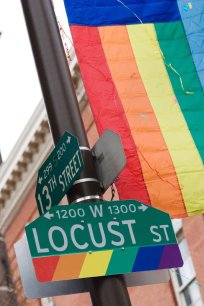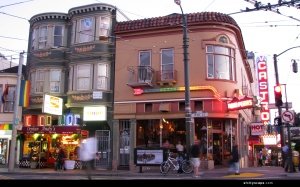I recently posted on the fact that a larger proportion of gay people live in larger cities than “the country” in the U.S. (here). The post prompted a wonderful discussion about some additional issues that deserve more attention.  One is that the forces that may have called gay men and women to the city over the course of the 20th century might be subsiding. For instance, Amin Ghaziani addresses the alleged demise of the “Gayborhood” as gay urban enclaves have recently started to be seen as less desirable places to live for more gay men and lesbians (this is an issue I discuss in more depth here). Another issue that I briefly addressed in that initial post is whether “the city” has the same draw for (or effect on) gay men and lesbians alike, and/or whether different issues structure the geographic living considerations of gay men and lesbians in different ways. It is this latter issue that I’ll discuss here.
One is that the forces that may have called gay men and women to the city over the course of the 20th century might be subsiding. For instance, Amin Ghaziani addresses the alleged demise of the “Gayborhood” as gay urban enclaves have recently started to be seen as less desirable places to live for more gay men and lesbians (this is an issue I discuss in more depth here). Another issue that I briefly addressed in that initial post is whether “the city” has the same draw for (or effect on) gay men and lesbians alike, and/or whether different issues structure the geographic living considerations of gay men and lesbians in different ways. It is this latter issue that I’ll discuss here.
In the initial post, I was prompted by a recent Gallup report presenting the relative prevalence of the LGBT population by state (a measurement that I felt concealed some important issues). The finding that LGBT individuals are not evenly distributed throughout the U.S. is probably not that surprising. But the “where,” “how” and “why” are wonderfully rich questions as sociologists are interested in how people make choices within systems of structured constraint. When individuals and groups all start making the same or really similar decisions, sociologists get interested in the kinds of social and cultural forces at work helping them come to—or providing a framework for—those decisions.
 At the conclusion of the initial post I addressed the two hypotheses proposed to account for the larger proportions of LGB-identifying individuals in cities. One theory is that they move there (the “migration hypothesis”)–they migrate to spaces where more people who identify in similar ways might congregate. The other explanation is that living in the city plays a critical role in structuring sexual identity—that cities might either invite or allow people to identify as gay more readily (the “elicitation/opportunity hypothesis”). Both hypotheses are likely at work, but the latter—the elicitation/opportunity hypothesis—had much more explanatory power for men than for women. Simply put, cities—they suggested—play a larger role in inviting/allowing men to identify as gay than they do for women. But what about the gay men and lesbians who elect to live in rural areas. Does a migration or elicitation/opportunity perspective make sense of their experiences? And if so, what might that mean?
At the conclusion of the initial post I addressed the two hypotheses proposed to account for the larger proportions of LGB-identifying individuals in cities. One theory is that they move there (the “migration hypothesis”)–they migrate to spaces where more people who identify in similar ways might congregate. The other explanation is that living in the city plays a critical role in structuring sexual identity—that cities might either invite or allow people to identify as gay more readily (the “elicitation/opportunity hypothesis”). Both hypotheses are likely at work, but the latter—the elicitation/opportunity hypothesis—had much more explanatory power for men than for women. Simply put, cities—they suggested—play a larger role in inviting/allowing men to identify as gay than they do for women. But what about the gay men and lesbians who elect to live in rural areas. Does a migration or elicitation/opportunity perspective make sense of their experiences? And if so, what might that mean?
